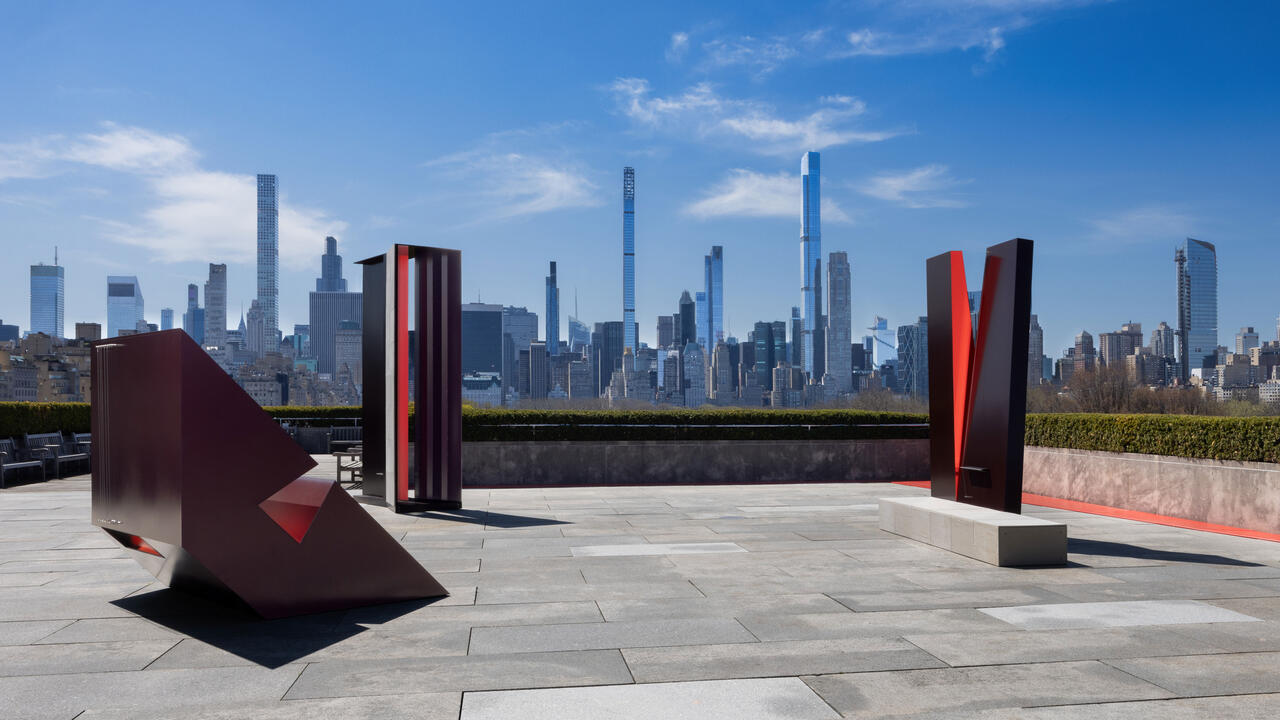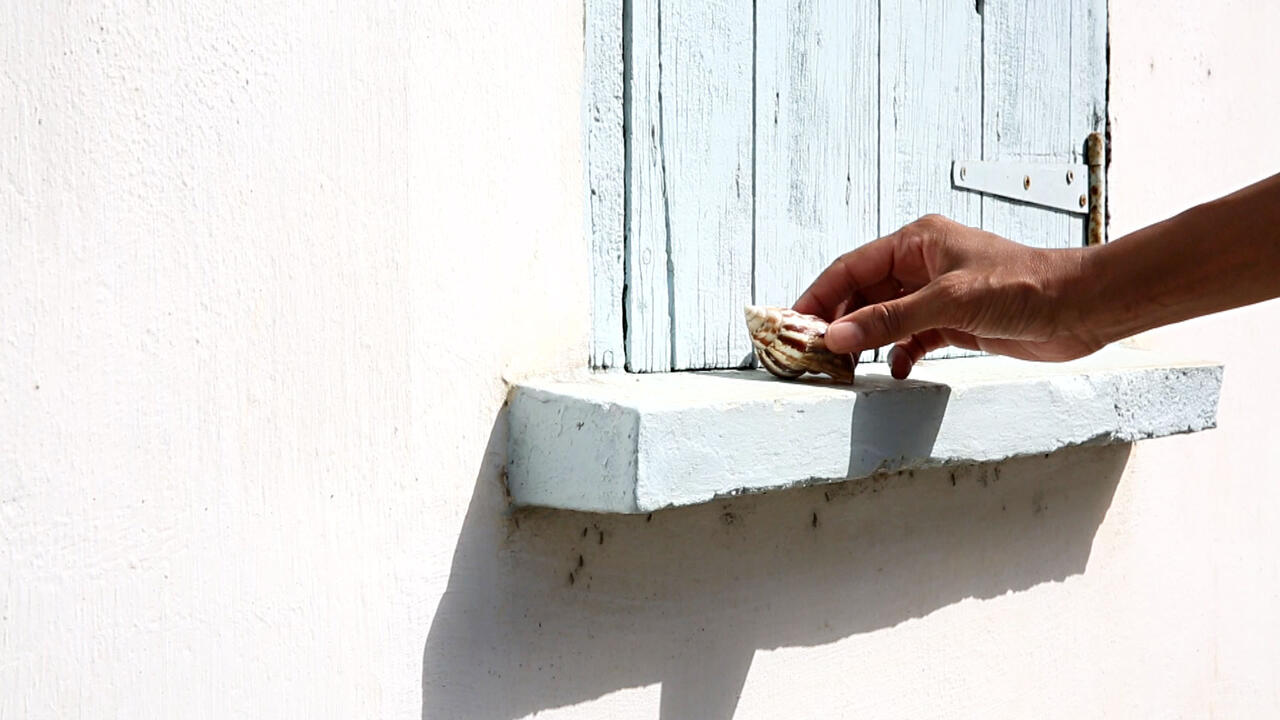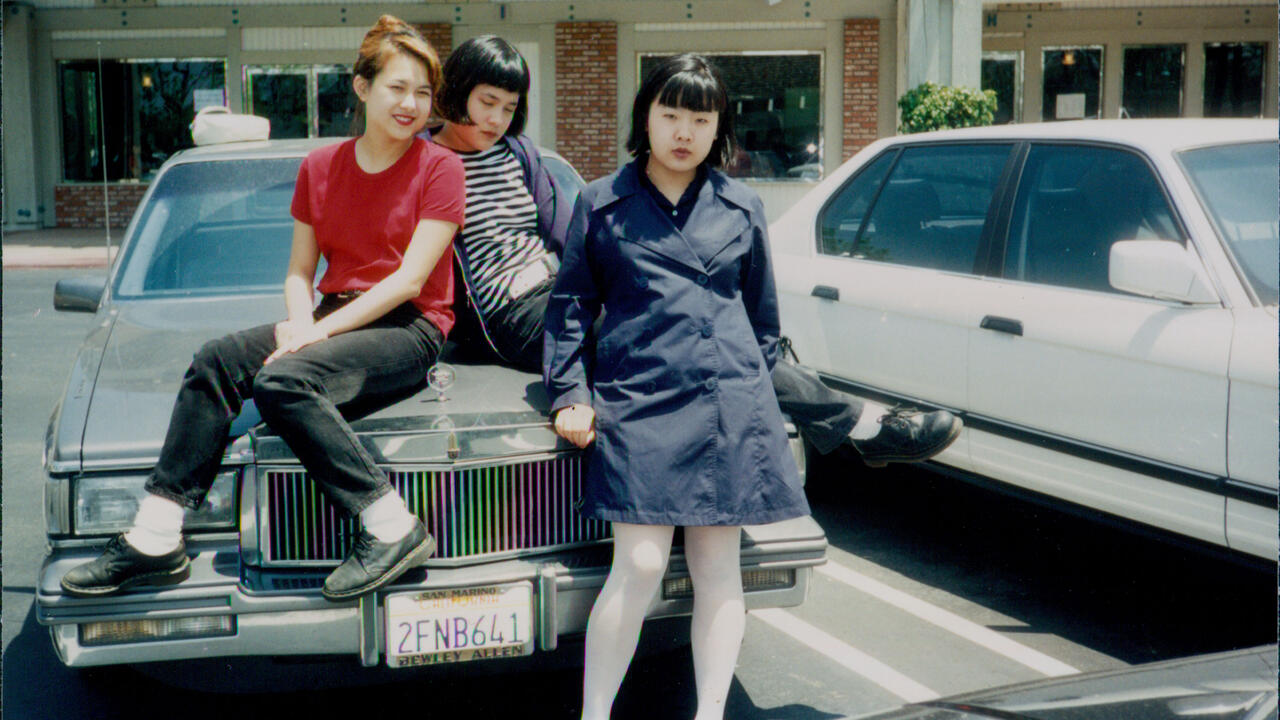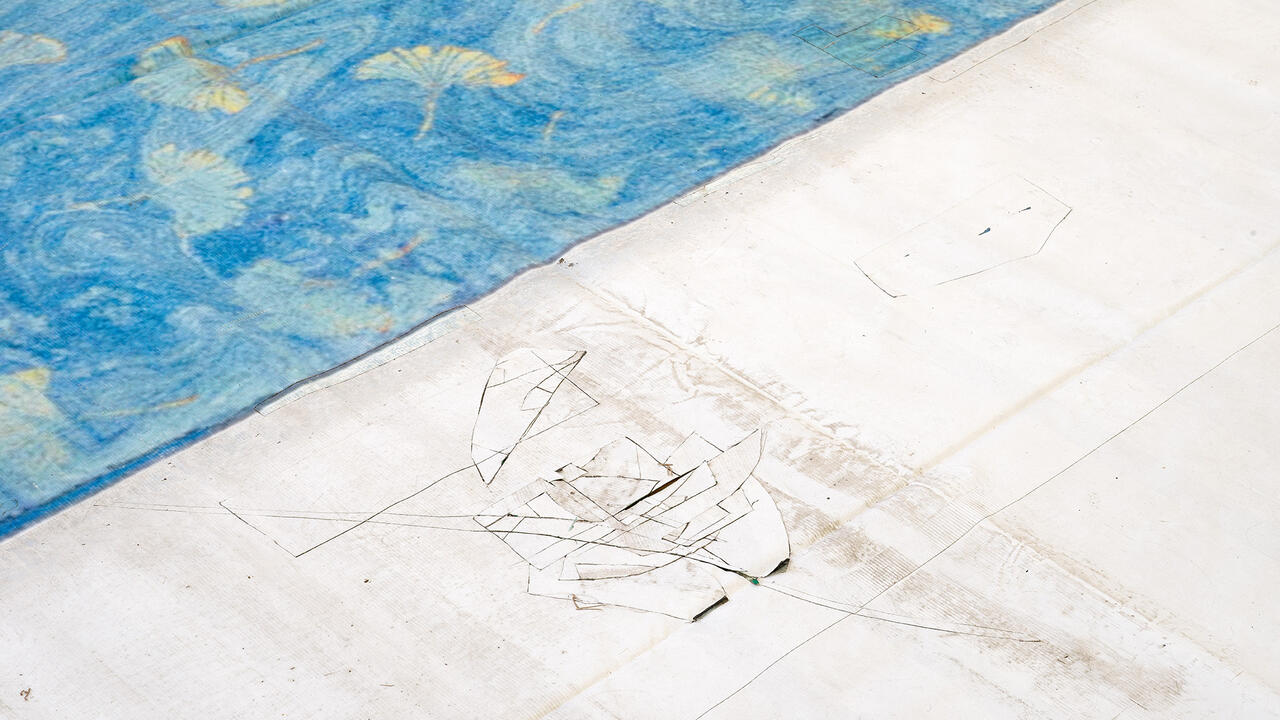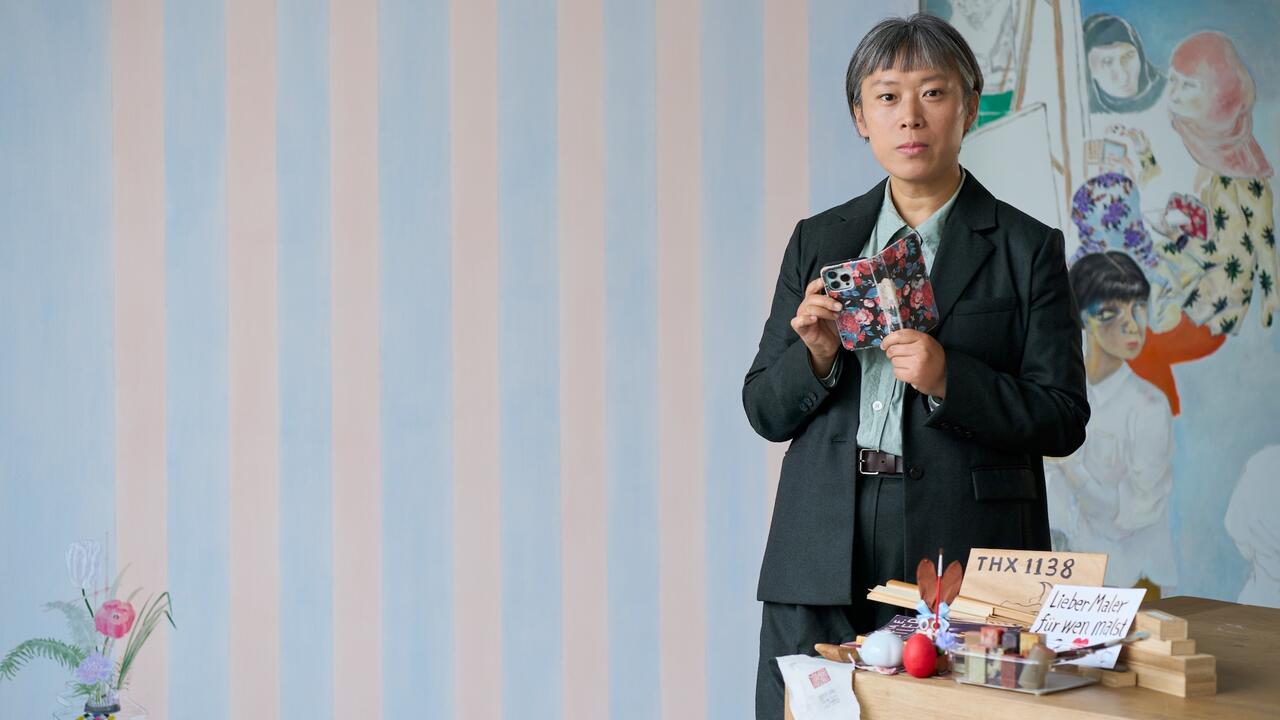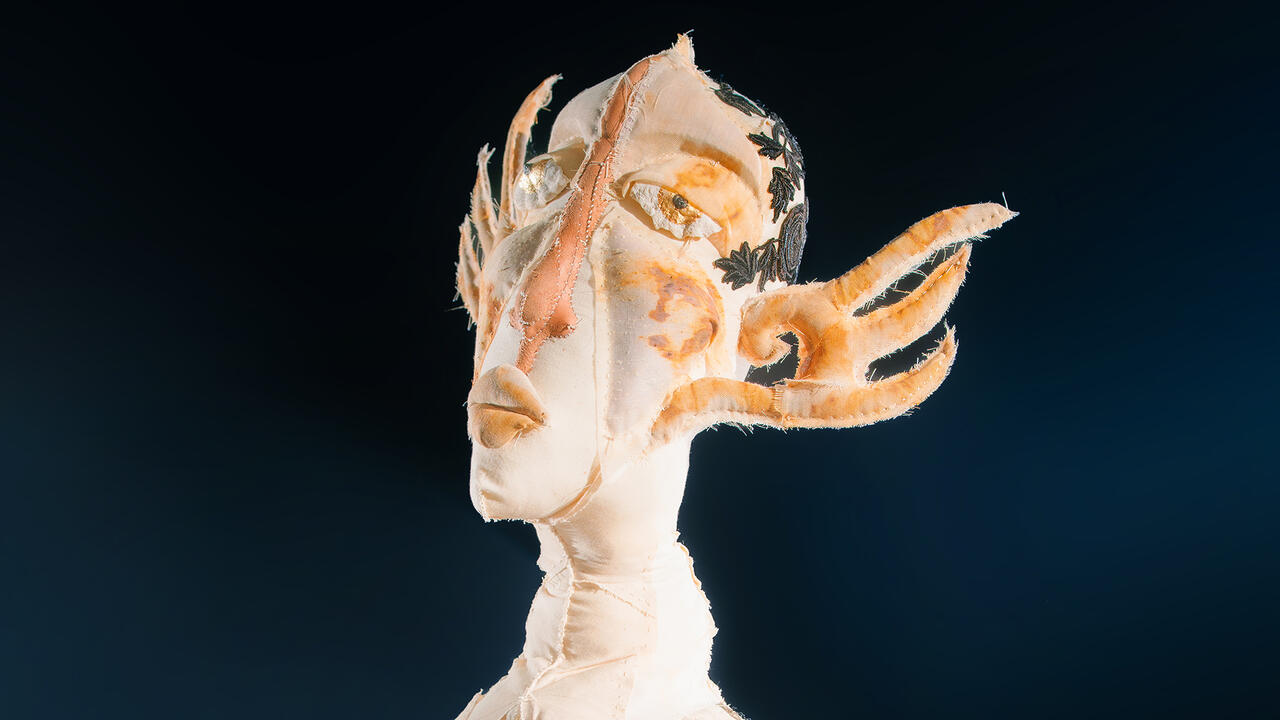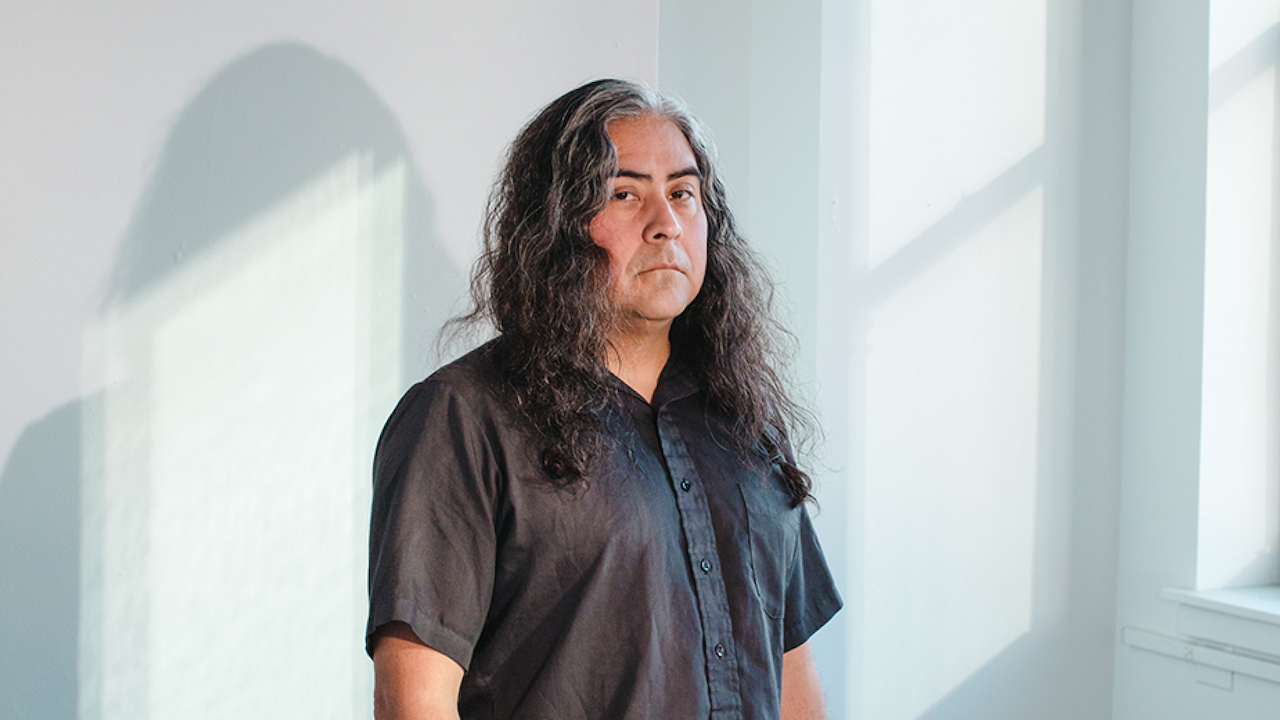Lost and Found
Included in CTM Festival in Berlin, musician Guillermo Galindo discusses the instruments he builds from the discarded belongings of migrants
Included in CTM Festival in Berlin, musician Guillermo Galindo discusses the instruments he builds from the discarded belongings of migrants

‘A person was driving the truck, and there was this wall of bamboo. He said that on the other side of this bamboo is the river. When the bamboo stopped, I saw it. It was very striking. And immediately my phone started picking up the signal of Mexico.’
From a hotel in Berlin, Guillermo Galindo is speaking about the first time he visited the Mexico-US border. Mexican by birth but now living in California, where he is a senior adjunct professor at the California College of Arts, Galindo is used to hopping between the two countries. For him, the journey is smooth. ‘I usually fly,’ he says. ‘For me, the border is the airport.’
That is not the case for the roughly 188,000 Mexicans who are apprehended at the real border every year, ending their attempts to cross the increasingly militarized corridor into California, Arizona, New Mexico, or Texas. And yet, despite the arrests, there is a steady migration of Mexicans into the States. ‘You see them on a daily basis,‘ Galindo says. ‘All the toilet cleaners, the people who take care of children, the people who pick the fruit. But somehow, they are invisible.’
Galindo has dedicated the latter part of his career to making the invisible inescapable. His work skirts around the line between sculpture and musical composition. He is a composer by training, having studied at the Conservatorio Nacional de Música in Mexico, and later at Berklee in Boston and Mills College, Oakland, where he was immersed in the tradition of Harry Partch and microtonalism. Today, the basis of his practice consists of the construction of musical instruments. But these are not guitars, or flutes, or even percussion. Instead, they are a strange hybrid – ‘sonic devices’, as he calls them, built from the lost possessions of migrants and refugees.

‘I was writing orchestral pieces and string quartets,’ he says, ‘classical contemporary music. After my last orchestral piece I had a big change. I needed to be closer to the public. I started exploring Native American and Mesoamerican cultures, and music as healing, and I was reading Alejandro Jodorowsky's Psychomagic [1995], which is about curing with personal objects. I began the project [making the sonic devices] in 2006, as a process of healing.’
Galindo’s first sonic device (MAIZ-Cybertotemic sonic device, 2006) is on display this week at a group show as part of CTM, an interdisciplinary music and arts festival in Berlin. This year the festival focuses in part on Mexican experimental music, with two nights of performances from Mexican musicians and a collection of works exploring sound art and electronic music in the country.
‘It’s an electromechanical sonic device,’ Galindo says of the instrument, which resembles the exploded innards of a barrel organ. ‘It's made with personal objects of mine, and it was to cure myself of problems that I had. It's a box of wine that I drank while I was writing an orchestral piece, and the strings are played by my wife's credit card. It was a curing.’

Galindo began to further explore the connection between people and their possessions. The work soon expanded into what he now calls the Border Project, which brings to light the stories of migrants and refugees through their discarded belongings. The project stemmed from an encounter with photographer Richard Misrach, who has spent the last several years documenting the lost possessions of migrants on the border. The pair had their first joint exhibition in 2016, at the San Jose Museum of Art.
As part of CTM, Galindo performed new compositions on some of the instruments he has built from those possessions. ‘The main instrument was built from some leftovers from the Kassel refugee camp,’ he says, referring to the disused airport in central Germany that now houses some 1,500 people, and to which he was invited by a local curator. At first, his visits to find material for instruments were frustrating. ‘Many refugee camps don't allow anything solid, like metals, because fights happen,’ he explains. ‘So all I kept finding was paper stuff, but it's very difficult to make instruments out of paper.’ Eventually, though, a donation of discarded items from the camp yielded some of what appears around him on stage – a cacophonous mish-mash of children’s toys, Thermos flasks, beds, blankets, tricycles.
Galindo’s twin focuses, on Mexico and Germany, reflect two of the defining political crises of our generation: first, an American President who plans to further militarize the crossing into the States from the south, and who within less than a week in office has issued travel bans on those from a host of majority Muslim countries; and second, Europe’s handling of the greatest mass migration in living memory, which, according to the UNHCR, claims ten lives every day in the Mediterranean alone. For Galindo, there are common threads.

‘It’s about migration in general,’ he says, ‘but I found a lot of similarities. When I went to Lesbos, I was surprised that the scattered objects were very similar to what you find in the desert, and they were scattered in the same exact way.’ Those objects dictate Galindo’s compositions. ‘The instrument and the object define what they want to be,’ he says. ‘In a Western instrument, you make it do the sound that you want to hear. This works the opposite way – the instrument tells me the sound it wants to make.’ Border Patrol shotgun cases become percussive adornments for a lost football encased in metal; discarded electronics from a failed surveillance program are rebuilt as a mallet instrument; and, in Efigie, the unexplained ‘scarecrows’ that Galindo often stumbles across on his Mexican trips are repurposed as harp-like objects to be plucked.
But despite his dedication to the stories of those on the move, and despite a public sense that we are living through a unique period in the history of mass migrations, Galindo believes that we are seeing the latest recurrence of a pattern that has looped for millennia. ‘Migration has always existed,’ he says. ‘It existed 50,000 years ago. I don’t believe much in linear time – I believe more in cyclical time. Things repeat over and over. It’s a unique time in the sense that it hasn't happened in this way before. But it has happened.’
Main image: Guillermo Galindo photographed by Patricia Tovar. Courtesy: Patricia Tovar









